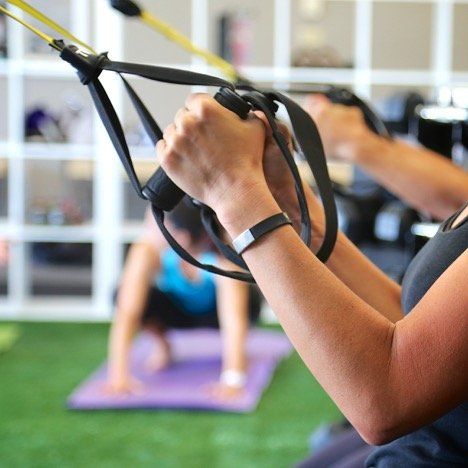Is TRX Suspension Training Right for You?
Is TRX Suspension Training Right for You?
When starting a workout program, it’s important to find something that works well for you. Exercise shouldn’t be something you hate to do; in fact, the more reasons you have to enjoy your workout, the more likely you are to make it a habit. Here at Vitruvian, we incorporate TRX Suspension Training in every program for its myriad of benefits. Here’s how training with us and the TRX system will help you reach your goals!
Enjoy Endless Customization
There are more than 300 exercises you can do with a TRX suspension trainer. Since most human movement can be categorized as locomotion, manipulation, or striking, why plant yourself on a bench or a machine to exercise when you don’t operate that way in real life? The TRX system will Make Your Body The Machine ™, enabling a comprehensive workout that will help you achieve your goals.
Each movement in a TRX class at Vitruvian is adaptable to your abilities, so any exercise can be made more or less difficult by repositioning your body. Simply put, you are less likely to plateau because you can make any exercise more of a challenge. Countless variations mean that you can constantly push yourself and enhance your coordination, strength, agility, and stamina.
Build Core Strength
All movement in the TRX will require core stabilization work. One or more extremity will always be in the TRX and one or more extremity will always be on the ground, so your core is constantly engaged. Whether you’re using the TRX to squat, row, or do push-ups, you’ll be using your abdominals and back muscles to stabilize your body. This inherent core work is fundamental for injury prevention, so the more you train with us on the TRX, the better prepared you are for any functional movement outside of the fitness studio.
Be a Part of an Inclusive Community
Since the TRX system is so versatile in its use, people of any background or ability can use it. Young or not-so-young, beginners or experts, athletes, cyclists, weightlifters, yogis–it doesn’t matter, everyone can use the TRX and have a challenging, fun workout. Rehabbing an injury? You can use the TRX. Simply put, this suspension training system has benefits for any person at any stage of their wellness journey.
Because the TRX suspension trainer is so versatile, we can all do the same exercises at the same time. If you’re new, you’re easing yourself into the moves; if you’re a regular, you’re pushing yourself harder. Either way, we’re here to support each other and become stronger individuals and a stronger community.
Contact us now to schedule your first class on these suspension trainers and see what all the TRX fuss is about!
You might also enjoy these posts . . .








